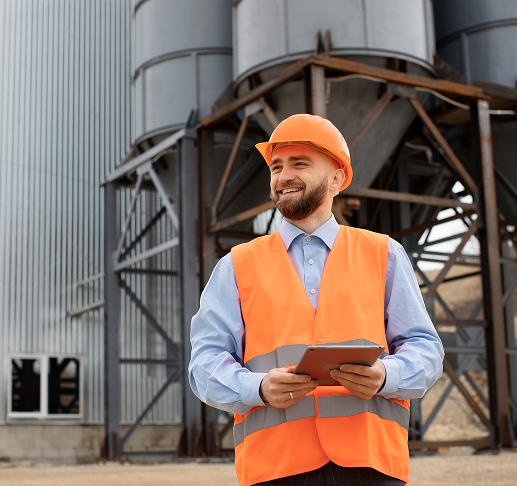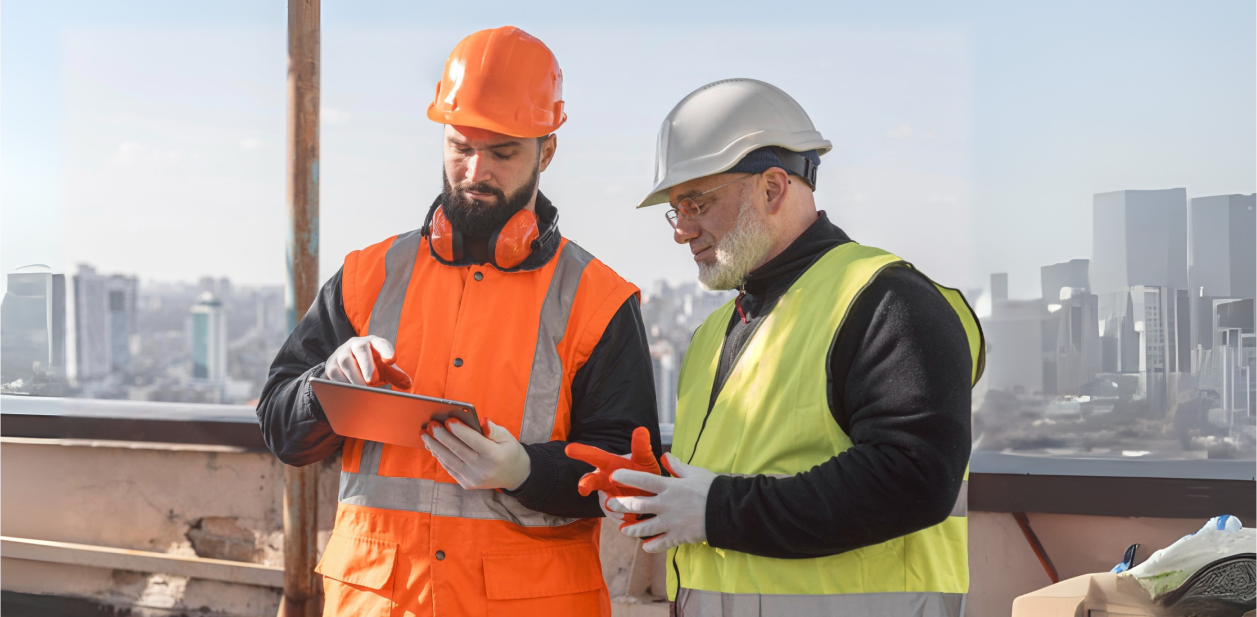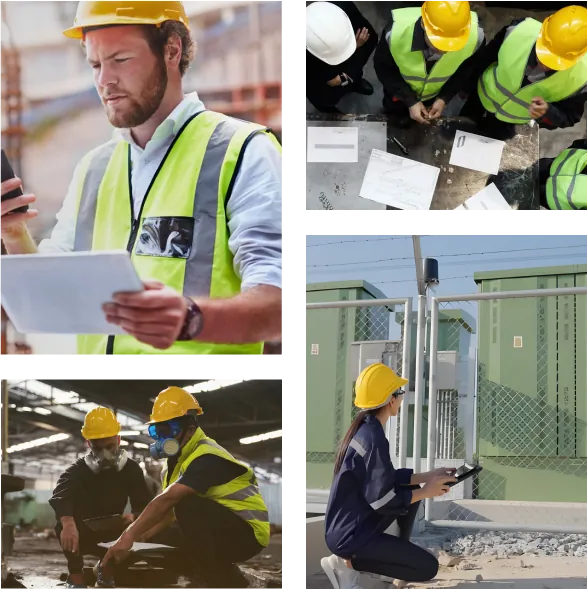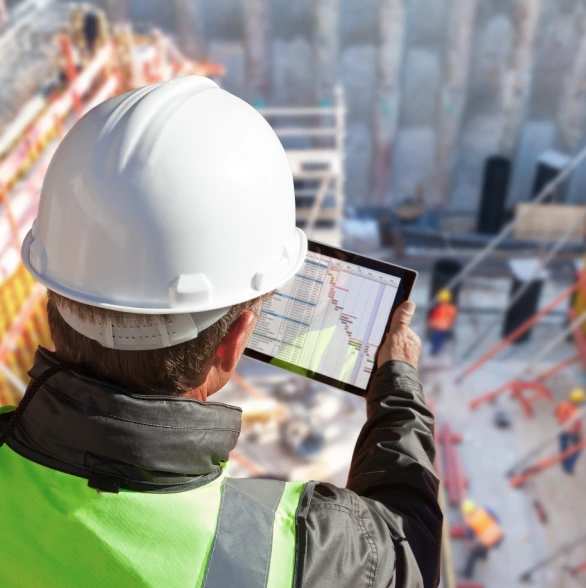bootsonground
How Modern EHS Platforms Are Making Cement Plants Safer Than Ever
The cement industry faces unique dangers every single day. Workers handle heavy machinery, extreme heat, toxic dust, and dangerous chemicals. Traditional safety methods often fall short in this demanding environment. Next-generation Environmental, Health, and Safety (EHS) platforms are changing how cement companies protect their workers and operations.

Critical Safety Hazards in Cement Manufacturing

The cement industry operates in highly dangerous environments where workers face serious risks at every stage. Quarry operations bring hazards from rock falls and equipment failures, while crushing and grinding release dust clouds that damage lungs and reduce visibility.
Kill processes expose workers to extreme heat above 2,700°F, and wet concrete causes chemical burns from alkaline compounds. Confined spaces in silos also carry suffocation and entrapment risks. Because cement materials can cause rapid, irreversible harm, strict safety protocols are essential to prevent life-altering injuries. Proactive monitoring, real-time reporting, and worker training are critical for minimizing these risks and ensuring long-term workforce safety.
Why Traditional Safety Methods
Miss the Mark
Old-school safety approaches rely on paperwork, manual inspections, and reactive measures. Safety officers walk around with clipboards, checking boxes on forms—but this system leaves major gaps.

Delayed reporting
Paper-based forms slow everything down. By the time a report is filed, processed, and escalated, accidents may already have happened.
Missed problems
Manual inspections only capture issues during scheduled visits. Hazards that appear in between often go unnoticed.
Outdated training
Traditional classroom sessions and PowerPoint slides don’t prepare workers for real-world dangers. Important safety knowledge is quickly forgotten when it matters most.
Communication breakdowns
Safety concerns discovered on the day shift may never reach the night shift. Departments and locations often work in silos, creating dangerous blind spots.
How Digital EHS Platforms Transform Cement Plant Safety
EHS management software for cement creates unified digital platforms that streamline safety operations and ensure transparency across facilities. Smart sensors monitor air quality, equipment, and worker movements, instantly alerting managers to dangerous conditions.
Four digital safety systems are transforming workplace safety: wearables tracking worker vitals, augmented reality for training, AI for predictive risk analysis, and navigation systems guiding workers safely.
Digital platforms consolidate safety data into centralized dashboards for monitoring multiple plants simultaneously. This visibility enables rapid pattern identification and prevention of recurring safety issues.

Smart Monitoring That Never Sleeps
EHS technology uses real-time monitoring systems and wearables to protect workers continuously. Air quality sensors detect dangerous dust levels, automatically triggering ventilation and alerts when limits are exceeded.
Wearable devices track worker vital signs and location. If a worker falls, emergency responders get immediate alerts with exact locations. Equipment sensors predict failures before accidents, while vibration sensors detect bearing problems on crushers.
Video analytics monitor unsafe behaviors. When cameras spot workers without protective equipment or in restricted areas, supervisors receive instant alerts to prevent incidents.

AI-Powered Risk Prevention
AI-enabled compliance and EHS analytics represent the cutting edge of safety technology. Artificial intelligence analyzes massive amounts of safety data to predict where accidents are most likely to occur.
Pattern Recognition
Machine learning algorithms study incident reports, near-miss data, and equipment performance to identify conditions that typically lead to accidents, allowing managers to take preventive action
Predictive Maintenance
AI systems optimize maintenance schedules based on usage patterns, environmental conditions, and historical failure data to prevent equipment breakdowns before they happen
Trend Analysis
Natural language processing analyzes worker feedback and incident reports to identify emerging safety concerns, spotting trends in complaints about equipment or working conditions that indicate growing risks

Training That Actually Works
Animation videos, EHS software including ePTW, contractor management, and accident reporting tools make safety education more effective. Virtual reality training puts workers in realistic dangerous situations without actual risk, allowing them to practice emergency procedures for chemical spills, equipment failures, and fire emergencies in simulated cement plant environments.
Interactive mobile apps deliver safety information when and where workers need it. Instead of memorizing lengthy manuals, workers access specific procedures on smartphones while on the job. AI tailors content to each worker's role and risk level, giving new employees comprehensive foundation training while experienced workers focus on advanced topics.
Microlearning modules break complex safety topics into short, digestible lessons that workers can complete during breaks without disrupting operations.

Better Communication Saves Lives
Real-time, customizable dashboards provide comprehensive insights into safety metrics, incident reports, and compliance statuses across multiple sites, ensuring everyone stays informed about safety conditions. Mobile communication tools allow instant alerts to all affected workers when hazards are discovered—when a gas leak is detected, the system immediately notifies everyone in potentially affected zones.
Digital permit systems ensure all safety requirements are met before starting dangerous work. Workers must complete electronic checklists and get supervisor approval through the platform before beginning tasks like confined space entry or hot work. Shift handover tools capture safety concerns, equipment issues, and ongoing hazards in digital logs so incoming workers know exactly what to watch for.

Measuring Success With Data
Companies prioritize two critical areas: respiratory and auditory health, and modern platforms provide precise measurement tools for these and other safety metrics.
Real-time dashboards show leading indicators like near-miss reports, safety training completion rates, and equipment inspection results. These metrics help predict and prevent accidents before they occur.
Automated reporting eliminates the administrative burden of safety compliance. The system generates required reports for regulatory agencies, insurance companies, and corporate management automatically.
Benchmarking tools compare safety performance across different plants, shifts, and time periods. Managers can identify best practices from high-performing locations and replicate them throughout the organization.

Overcoming Implementation Challenges
Cybersecurity Protection
Protect sensitive data with encryption, secure cloud storage, and audits to safeguard information from sensors, wearables, and smart devices.
Worker Acceptance
Overcome resistance by involving workers, using safety champions, and showing how technology simplifies jobs, improves safety, and empowers teams.
Technology Integration
Address integration challenges with phased rollouts, starting pilot programs in single departments, testing compatibility, and expanding gradually across facilities.
Cost Management
Calculate ROI from fewer accidents, lower insurance costs, and higher productivity—many companies achieve payback within 12–18 months.
Training Success
Budget for training and support, provide user-friendly materials, appoint internal champions, and ensure continuous learning for lasting adoption.
How BootsOnGround Helps
Cement Plants Stay Safer
BootsOnGround’s EHS platform is designed to handle the unique risks of the cement industry. From real-time incident reporting and sensor integration to AI-driven risk prediction and mobile-first training, our app gives safety managers and workers the tools they need to prevent accidents before they happen. With digital permits, automated compliance reports, and instant communication features, BOG ensures hazards are identified, shared, and resolved faster than ever. By combining monitoring, training, and analytics in one platform, BootsOnGround helps cement plants build safer, more compliant, and more productive operations.

Taking Action Today
Companies should start with basic digital safety platforms and build over time. Begin by digitizing incident reporting and inspections. Add real-time monitoring for critical risks. Invest in worker training and partner with industry-specific EHS vendors.
Frequently asked questions
Respiratory exposure to cement dust poses the greatest long-term health risk, while equipment accidents and chemical burns cause the most immediate injuries.
Costs vary based on plant size and features, but most systems range from $50,000 to $500,000 annually with strong ROI from reduced accidents and compliance costs.
Yes, most digital safety systems work in existing facilities. Wireless sensors and mobile apps require minimal infrastructure changes.
Basic systems can be operational in 3-6 months, while comprehensive platforms with full integration may take 12-18 months to deploy completely.
Worker acceptance varies, but involves workers in system selection and provides proper training typically leads to good adoption rates within 6 months.
Most cloud-based platforms require minimal maintenance, but sensors and wearable devices need regular calibration and battery replacement.
The Future of Cement Industry Safety
Digital twin technology creates virtual models of entire cement plants. These models simulate scenarios to identify potential hazards before they become real problems. Autonomous robots will handle dangerous tasks in extreme conditions where human workers face serious risks.
Advanced analytics will predict individual worker injury risk based on factors like fatigue and experience. This personalization will allow targeted interventions to protect vulnerable workers.
